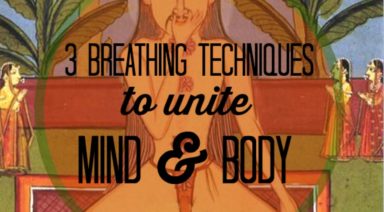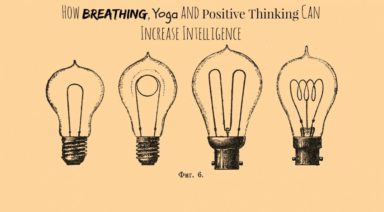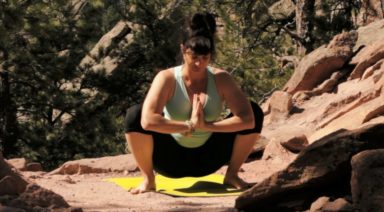5 Tips to Get you Started on a Daily Meditation Practice

- Plan ahead
A good time to meditate is right after you wake up, before your mind is busy with thoughts and activities of the day. If you normally feel sluggish in the morning, take a look at your nighttime routine. Ayurveda, the 5,000 year old healing system of India, suggests following nature’s rhythm, e.g. waking at sunrise and quieting down at sunset. Try getting a good 6-8 hours of sleep each night and avoid stimulating food, conversation and activities prior to sleep. Even though sitting in front of the TV or computer, may sound relaxing, the bright light produced by TV’s and computers can disrupt a good night’s sleep.
- Wake up 15 minutes earlier
If you use an alarm, choose a quiet setting for the ringer and place it further away from your nightstand. Let yourself slowly wake up rather than jarring your sympathetic nervous system, commonly referred to as the “fight or flight” response. Try to wake yourself up as you would a newborn baby.
- Find a comfortable, quiet place to sit
Choose a place in your home that you can dedicate as your “seat.” This can be on a cushion on the floor or if that’s uncomfortable, find a chair where you can sit upright and place both feet on the floor. Try to keep your spine erect so that your breath and energy can flow freely. It’s also healthier for your back.
- Start with breath awareness
Take a couple of minutes to bring your awareness to your breath. Inhale deeply and exhale completely, releasing any tension in your body. If you are meditating in the afternoon, try to let go of the events of the day and bring your attention to the present moment.
- Use a mantra
The word mantra means instrument or vehicle of the mind. A mantra is a tool to help quiet your mind first prior to experiencing moments of silence. You can receive a personal mantra from a meditation teacher or to help you get started, use a simple mantra of “1, 2.” As you inhale, silently repeat “1” and as you exhale, silently repeat “2.” Inhale “1,” exhale “2,” and keep repeating. When you notice that your awareness has drifted off to thoughts, gently bring it back to the repetition of “1, 2.” Be easy on yourself and try not to judge your meditation. Trust that the benefits of a daily meditation practice are present to you and those around you in your interaction with others.
Which Type of Meditation Style Is Best for You?

Meditation encompasses a wide variety of practices aimed at quieting the mind and promoting awareness. While it may appear as simple as sitting silently, truly committing to a regular meditation routine can be challenging, especially when daily stressors, distractions, or discomfort arise. But it doesn’t have to feel intimidating.
The benefits of meditation are scientifically proven: it supports mental health by reducing stress and anxiety, helps lower blood pressure, improves overall well-being, and promotes a deep sense of inner peace. It’s even been shown to help manage chronic pain. At its core, meditation is a personal journey, and success comes from finding a meditation style that aligns with your individual needs and spirit.
There are many different styles of meditation—from mantra-based techniques to breathing exercises to movement-based practices. Each approach offers something unique, and exploring the various kinds of meditation can help you discover the one that best fits your life. The most important part? Show up. Be consistent. And allow yourself the space to grow through your meditation practice.
There’s no one-size-fits-all method. The best meditation style is the one that supports your goals and gives you a true sense of peace.
What Are the Three Major Types of Meditation?
Although there are many styles of meditation, most fall into three primary categories:
- Focused Attention Meditation – concentrates on a single object or sensation, such as breath or a mantra
- Open Monitoring Meditation – involves non-judgmental awareness of thoughts, sensations, or surroundings (e.g., mindfulness-based or body scan)
- Automatic Self-Transcending – allows the mind to settle inward effortlessly beyond thought, using techniques like transcendental meditation to access deeper levels of awareness without concentration or control
Understanding these broad categories can help you choose a meditation style that best supports your goals and preferences.































